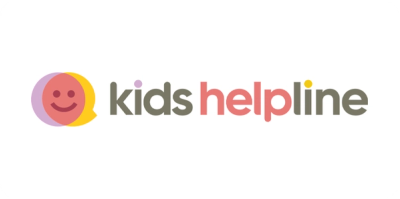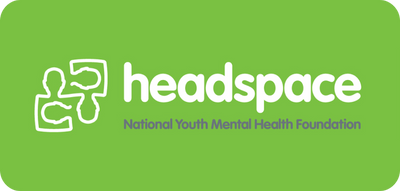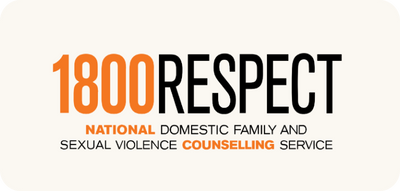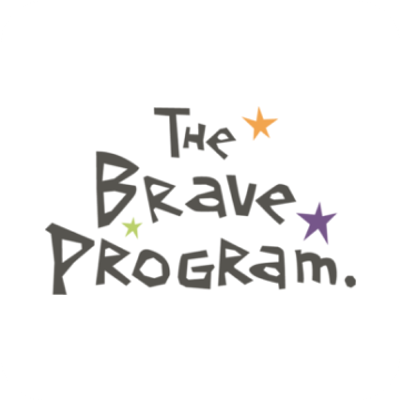What should I do if I’m concerned about a child or young person’s mental health?
Starting a conversation about mental health with kids or teens can feel overwhelming, especially if you’re unsure how they’ll respond. Whether a child is struggling to express their feelings or a teenager seems distant, your care and presence can make a lasting difference.
The most important thing to know is that you don’t need to have all the answers. Simply being there to listen without pressure or judgement is one of the most powerful things you can do.
In this support guide, you’ll find information on:
- Signs that a child or young person might need support
- Common mental health challenges
- Tips for starting a conversation
- What to do if a child or young person appears suicidal
- Support services and further resources
- Ways to look after yourself as a parent/carer.
Scroll down to learn more.
“You don’t know the effect it can have, but just physically being there for someone can make all the difference.”
Signs a child or young person might need support
Kids and young people often show signs of distress differently from adults.
Younger children may struggle to put feelings into words, while teenagers might withdraw or act out. Recognising changes in behaviour can help you understand what they’re going through and how best to support them.
- Signs in kids can include:
- Increased clinginess or fearfulness: They may suddenly want to stay close to you, struggle with separation, or develop new fears (e.g., being scared to sleep alone)
- Physical symptoms: Frequent tummy aches, headaches, or nausea (with no clear medical cause)
- Big emotions and outbursts: More tantrums, trouble concentrating, or increased frustration
- Regressing to younger behaviours: Bedwetting, thumb-sucking, or needing a comfort object more often
- Avoiding play and social time: Losing interest in activities they usually enjoy or withdrawing from friends.
These behaviours can often be a child’s way of saying, ‘I need help.’
Even if they can’t explain what’s wrong, responding with patience, reassurance, and gentle curiosity can help them feel safe enough to share.
- Signs in young people can include:
- Irritability or mood swings: They may snap easily or have emotional reactions that seem out of character
- Social withdrawal: Spending more time alone, avoiding friends, or seeming uninterested in relationships
- Changes in sleep or eating habits: Sleeping too much or too little, skipping meals, or eating noticeably more or less
- Sudden changes in appearance: Unexplained weight loss or gain, neglecting personal hygiene, or dressing very differently
- Risk-taking behaviour: Turning to alcohol, drugs, or reckless activities as a way to cope
- Perfectionism or overworking: Obsessing over grades, appearance, or achievements to feel in control.
Keep in mind that these behaviours don’t always mean something is wrong. But if you do notice changes, approaching them with curiosity, not judgement, can help them feel safe enough to open up.
Understanding common challenges
Kids and young people are growing up in a fast-paced world that can feel overwhelming. With school pressure, social expectations, and constant online connection, it’s understandable that many struggle at times.
If you’re worried about a child or young person, understanding what they may be going through can help you support them with care and reassurance.
Common challenges:
- Anxiety and overwhelm: Worries about school, friendships, or the future can make it hard to switch off. Social media, in particular, can add to self-doubt and stress.
- Low mood and withdrawal: Persistent sadness or a loss of interest in things they once enjoyed may signal depression. This can be triggered by bullying, loneliness, stress, or life changes.
- Self-harm: Some young people use self-harm to cope with distressing emotions, especially if they feel unheard or overwhelmed.
- Difficulty with focus and impulsivity: Trouble concentrating, staying organised, or managing emotions may be misunderstood as ‘bad behaviour’ when they actually need extra support.
- Body image and eating concerns: Pressure from peers, family, or societal expectations can lead to unhealthy relationships with food, exercise, or appearance.
- Using substances to cope: Some kids and young people turn to alcohol or drugs to manage stress or fit in, which can lead to addiction.
- Adjusting to family changes: Separation or divorce can bring feelings of sadness or anxiety.
Continue reading for tips on how to start a conversation with someone you're concerned about.
How to start a conversation
Starting a conversation about mental health can feel daunting, but the way you approach it makes all the difference.
- Before starting, take a moment to check in with yourself. If you’re feeling anxious, frustrated, or unsure, they may pick up on it and hesitate to open up. Taking a few deep breaths or reflecting on what you want to say can help you approach the conversation with calmness and reassurance, creating a safer space for them to share.
- Keep in mind that younger children may need simple language and reassurance, while teenagers might appreciate space and respect for their independence. No matter their age, listening without judgement and showing you’re there without pressure helps build trust.
- It's helpful to recognise that cultural norms and family dynamics also shape how kids and teens express emotions. Staying open-minded and curious about their perspective can make it easier for them to open up.
Scroll down for more tips.
- With kids, try to:
- Start with everyday feelings: ‘You seem a bit quiet lately. Are you feeling okay?’
- Use relatable examples: ‘Do you ever feel like [character] did when they were scared?'
- Encourage expression: ‘Can you show me how you’re feeling?’
- Reassure them: ‘It’s okay to feel upset. I’m here to help.’
- Make it comfortable: Drawing, playing a game, or an activity they enjoy can help them open up.
- With young people, try to:
- Pick the right moment: A car ride or shared activity can help.
- Offer alternatives: If in-person feels too hard, suggest texting.
- Listen without interrupting: ‘I’m here to listen, not to judge or fix things.’
- Reflect back: ‘It sounds like you’ve been really stressed about school.’
- Ask how you can support them: ‘What do you think might help?’
Conversation tips: do's and dont's
When talking to a child or young person about their feelings, small actions can make a big difference. The way you listen and respond can help them feel safe, understood, and supported.
Do:
- Sit or stand beside them: Sitting next to them rather than directly in front can make the conversation feel less intense
- Go for a walk or do something together: Walking, drawing, or kicking a ball around can help the conversation flow naturally
- Make gentle eye contact: Looking at them softly (but not staring) shows you’re listening without making it awkward.
- Listen without interrupting: Let them finish what they’re saying before you respond
- Show you’re listening: A small nod or saying things like “That makes sense” or “I hear you” can help them feel heard
- Match their energy: If they’re speaking quietly, keeping your voice gentle can help them feel more at ease
- Pause before replying: Taking a moment before you answer shows you’re really thinking about what they’ve said
- Focus on empathy, not sympathy: Try to understand what they’re going through. Instead of “I feel so sorry for you,” say “I can see why that would be really tough.”
Don’t:
- Force eye contact: If they’re looking away, don’t push them to meet your gaze
- Rush the conversation: If they’re struggling to find the words, give them time rather than filling the silence
- Downplay their feelings: Avoid saying things like “It’s not a big deal” or “You’ll get over it.”
- Jump in with solutions too soon: Sometimes, they just need to be heard rather than told what to do
- Change the subject: If the conversation feels heavy, it might be tempting to shift the focus. If possible, try to sit with them in the moment.
- Make it about you: It’s okay to share similar experiences, but keep the focus on their feelings rather than your own.
Want to learn about the difference between empathy and sympathy? Watch the video below.
Everyone’s challenges are unique, which means these conversations might lead to different next steps.
What matters most is letting the other person know you’re ready to listen and support them in a way and at a time that feels right for them.
What to do if a child or young person appears suicidal
If you’re worried a young person is at risk of suicide, it’s important to act quickly.
- Call 000 if there is immediate danger
- Speak to a Lifeline Crisis Supporter anytime via 13 11 14, text, and chat
- Contact a Kids Helpline counsellor for practical advice and reassurance.
It’s natural to feel overwhelmed or unsure about how to support a child or teen who is struggling. You don’t have to navigate this alone. Kids Helpline offers free, confidential support not just for young people but for parents and carers too.
Whether you need guidance on starting a conversation, understanding what your child is going through, or managing your own emotions, Kids Helpline counsellors can provide practical advice and reassurance.
Kids Helpline can help you:
- Learn how to support your child’s mental health in a way that feels natural and effective
- Understand common challenges like anxiety, self-harm, or social pressures
- Find strategies to communicate with your child, even if they’re reluctant to talk
- Navigate challenging situations, like family changes or school stress
- Access additional resources and support services if needed.
Looking after yourself
Keep in mind that prioritising your own wellbeing is just as important as supporting someone else. When you take care of yourself physically, mentally, and emotionally, you’re better able to show up for a child or young person in a calm and reassuring way.
Making time for self-care helps you recharge, manage stress, and navigate challenges with more clarity and resilience.
What can I try now?
If you’re experiencing symptoms such as racing thoughts, difficulty breathing, and a rapid heart rate, a grounding technique like box breathing is something you can use to regain a sense of control within minutes.
If you’d like to try box breathing now, click play on the video below.
Here are some more ways to take care of yourself while supporting others:
- Create a self-care box: Fill it with comforting items like photos, calming scents, or notes to yourself for challenging moments. Click here to learn more.
- Prioritise rest: Getting enough sleep and taking small breaks can make a big difference in how you feel. Click here to learn more.
- Lean on support services: Services like Carer Gateway provide guidance and support for carers. You can also consider doing their free Carer Skills Online Program.
If you need extra support, you’re not alone. You can always talk to a Lifeline Crisis Supporter. We’re here to listen to whatever you're going through via 13 11 14, text, and chat.
Support services and resources
Sharing practical support options can help spark a conversation and give a child or young person ideas for their next steps.
Even if they’re not ready to open up, knowing that services and resources are available (without pressure) can make them feel supported.
Helpful reads from the Support Toolkit you can share:
If it feels right, you can mention the Support Toolkit and explain that it’s a website they can explore at their own pace, in their own time. You might say, ‘I’ve come across a website that might be helpful. No pressure, but it’s there whenever you feel ready to check it out.’
Here are a few articles that are popular with kids and young people:
For more specific concerns like self-harm, substance misuse, or eating challenges, the Support Toolkit has tailored advice to help them take positive steps forward. The first step can be hard, but knowing support is available can make all the difference.
If they’re open to exploring more, you can also suggest trusted support services like:
Tools, apps, and real stories
Tools, apps, and real stories from others can be a helpful way for young people to explore their feelings, build coping skills, and access support in their own time.
If they’re not ready to talk, suggesting a trusted app can give them a private, pressure-free way to manage their mental health. Below are some evidence-based tools designed to help with stress, anxiety, mood tracking, and mindfulness.
Remember - your willingness to show up, listen, and learn alongside a child or young person is more powerful than having all the answers.
By simply being there, you’re helping to build trust and connection - and that’s what makes a lasting difference.



















